Planning your aerial installation
This page is not intended as a comprehensive guide to planning your whole installation, the individual subject pages will (more or less) provide that. It is a reminder of the order you should approach things and where to find the information on the relevant points, if you haven't got time to read the whole site, and even I haven't got time to read the whole site !
Subjects list :
Which aerial ?
Signal strength
Which transmitter ?
(incl : coverage checkers)
Don't neglect the cable
Poles, clamps & brackets
Feeding more than one TV
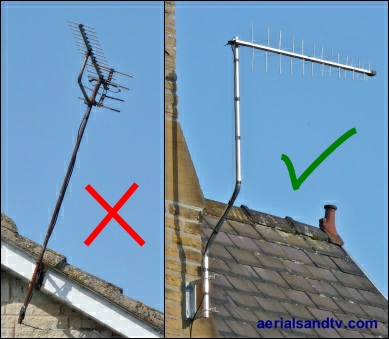
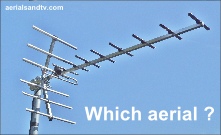
The most important decision is choice of aerial because it is only at the antenna that the vital signal quality can be attained, but this is dependent on which transmitter you're on and your signal strength.
Thinking of installing the aerial in the loft ? If so read this page.
If you're unsure which aerial to choose, go for a Log36 or a Yagi 18K. If this does not give an adequate signal try adding a Mast Head amplifier.
Many people find the relevant aerial reports are helpful in deciding which antenna to go for.
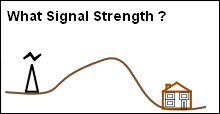
The next step is to know the signal strength in your area, remember that signal strength predictors are unreliable. Hints on how to work out your own signal strength can be found in the applicable article. Signal strength is important not only for aerial choice but also if you are planning to run more than one TV from your antenna.
If your signal strength is strong or medium you don't actually need to know what transmitter you're receiving your signals from, just use a Log 36 or a Yagi 18K !
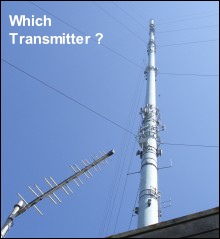
Now we have to decide which transmitter to use, see the article on this subject, though it must be admitted that nine times out of ten you`ll be on the same transmitter as your neighbours, so just look at the direction and polarity of their aerials ! Once you have identified the transmitter(s) check if we have a page dedicated to it, if not look on main 6 MUX transmitters. Both these pages will give information on the aerials we recommend for the relevant transmitter(s). If your transmitter is not listed on either source check the generalised article on Which Aerial For Which Transmitter. If your signal strength is strong or medium you don't really need to know what transmitter you're receiving your signals from, just use a Log 36 or Yagi18K !
For radio aerials see FM/DAB.
Postcode Coverage Predictors.
Try the Digital UK coverage checker (ensure detailed view is ticked) and it will give you an educated guess of which transmitters you could possibly use and the approximate signal strength. This is certainly easier than working through the relevant articles on this website, but it's not as accurate !
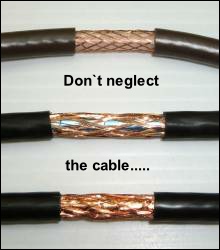
Unless you already have decent satellite quality cable installed (which you know is definitely in good condition) the downlead should be changed as a matter of course.
The choice of cable is easy because we only stock one type, and that is the best, i.e. copper/copper double screened satellite cable! The only choice is what colour do you want, Black, Brown or White (or yellow, or red or green) ! ? !
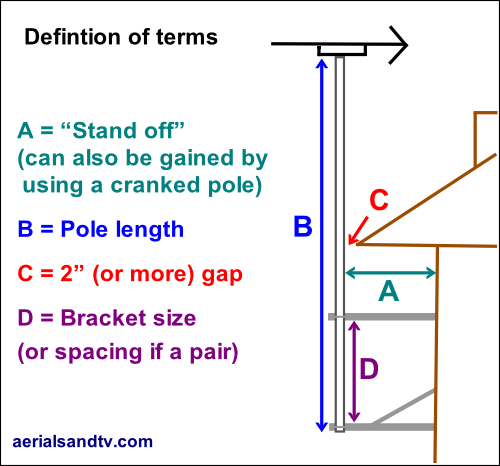
Work out what stand off, if any, you need, and how high you need your pole, which are available in 3ft, 4ft, 5ft, 6ft, 8ft,10ft & 12ft lengths (sold here). For help on deciding on pole height see use of longer poles, or research cranked poles or bracket "standoffs" (usually to clear the eaves above the install) consult the relevant highlighted links.
Once pole height has been decided next comes the bracket, try consulting which bracket for which pole.
Also see wall or chimney mount ?
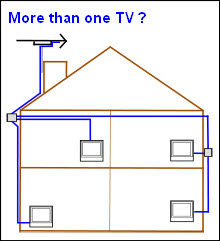
Are you going to feed more than one TV (and/or radio) ? If so, knowledge of your signal strength is also very important so you can decide should I use a splitter or an amplifier. Splitters are available for internal (sold here) or external use (sold here). If you are in a poor reception area (and most people aren’t, most people should use a splitter not an amplifier....) an aerial amplifier may help, but is a mains amp or a "mast head" more appropriate ? Just to further confuse matters, amplifiers are sometimes known as "boosters".
Whatever you decide, when it comes to a poor signal area, remember the golden rule : "aerial more important than amplifier" !
For general hints on installation, but how not to do it, laugh whilst you learn at Cowboys' Locker.
Unsure if you've included everything you need in your order? See TV Aerial Kits (chimney, wall or loft) or try using this sequence, which follows the route of the signal from start to finish !
Aerial > Cable > Diplexer and/or Splitter and/or Amplifier (if required) > Pole > Bracket > Wall Screws/Plugs/V Bolts or Chimney Lash Kit > Cable Clips > Hole Tidy > Plug(s).
Finally see Online Shop.

